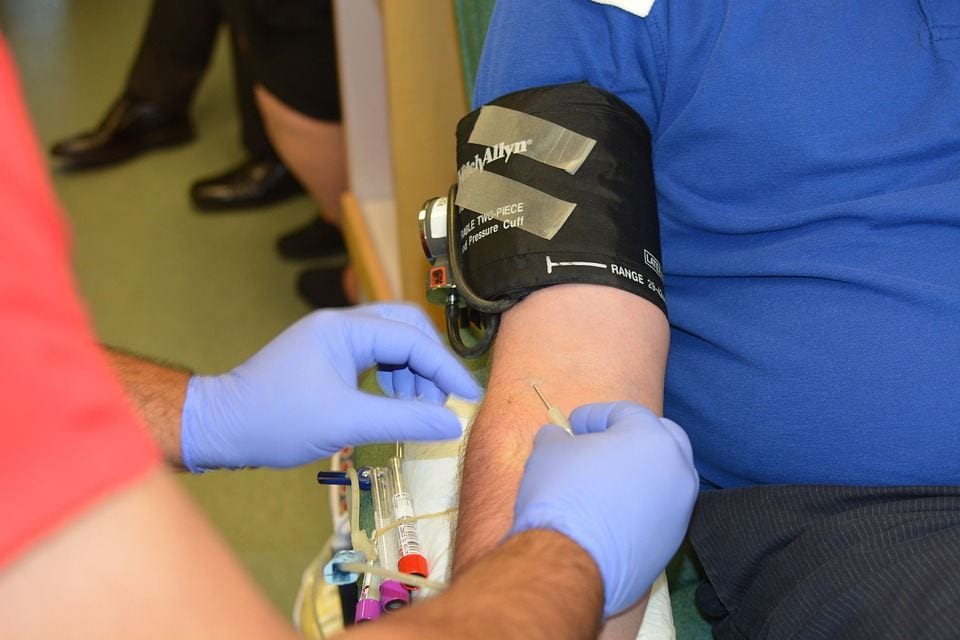By Simon Stewart
Simon Stewart investigates whether members of the gay community are discriminated against when it comes to the option of donating blood.
Blood, collected in very large amounts from the bodies of an ever-growing population of human beings, can be both a gift and a resource. Firstly as an act of altruism and then as a product of unrivalled value for use in medical intervention. In the 1970s, Richard Titmuss’ book, The Gift Relationship: From Human Blood to Social Policy, had a profound effect in the United States with its recognition of the superiority of voluntary donation over that of commercial systems. It was the catalyst for a quick policy change, which was then looked to as a model by the international community.
Throughout the world, a major factor in the development of voluntary blood donation services has been the commitment to the right of recipients to receive blood that is free from illness and disease. With this commitment comes a process of exclusion, commonly referred to as deferral, by which some individuals and groups of people are deemed unable to donate because, according to blood services, they have been exposed to a higher risk of disease than the general population. For example, people who lived in the UK, France or Ireland between 1980 and 1996 in the era of Bovine Spongiform Encephalitis (Mad Cow Disease) are deferred because of the heightened risk of having contracted Creutzfeldt-Jakob Disease in this time period. However, there is one group that has and continues to raise the question of whether or not this safeguarding can, in fact, be perceived as and, in practice, is an act of persistent discrimination; that is, the deferral of sexually active gay and bisexual men.
In the context of New Zealand, the blood service has deemed deferral based on specific behaviour “appropriate.” In their policy review from 2014, which has now come in to effect, the organisation recommended that “deferral for men who have had anal or oral sex (with or without a condom) with another man should be reduced from 5 years to 12 months since the last event.” Though this change could be considered as progressive, for sexually active gay and bisexual men, this policy still affects them in the same way as policies in countries that continue a permanent or life-long deferral, such as in Singapore, Ireland and the United States.
So how did it get to this point? In 1982, long before the lifesaving HIV medications of today were made readily available, it was found to be conclusive that the AIDS virus could be transmitted via blood transfusion. Before the first reliable test for HIV was released in 1985, refusing blood from so-called high-risk groups was considered the most practical way to avoid further, unnecessary contamination. These were gay and bisexual men, intravenous drug users, Haitians and Africans because 95% of known cases in the USA involved members of one or more of these groups.
In a period where homosexuality was still illegal in a majority of western states, Boel Berner explains that the suggestion of an ”intrinsic connection” between being gay and the spread of HIV, by “being excluded” from what is regarded as an extremely valued social practice, was seen and felt to be just another ”measure of discrimination” by gay organisations around the world. This was echoed in a statement by Kylie Valentine, where she concludes, in conjunction to this deferral policy, that “exclusion from public practices is a political act for those forced to struggle for rights and public recognition, regardless of the reasons for exclusion.”
Today, this sentiment remains. In the next article in this series, we will delve more deeply into the reasons why, in the current advanced medical climate, this weighing up of risk and discrimination still persists and continues to leave the gay and bisexual community confused about why they still cannot completely take part in civic society.
Simon Stewart is a postgraduate student in International Relations and Political Studies at the University of Auckland.
Disclaimer: The ideas expressed in this article reflect the author’s views and not necessarily the views of The Big Q.

